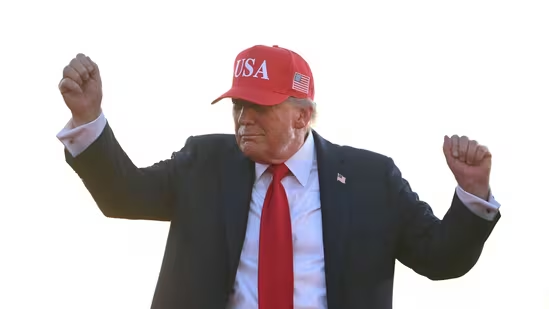
India
In a dramatic escalation of trade tensions, U.S. President Donald Trump has doubled tariffs on Indian exports from 25% to a staggering 50%—the highest rate imposed by Washington on any country. The trigger? India’s continued purchases of Russian oil, which Trump has cast as a politically charged justification for economic penalties. But as the dust settles, the logic of the “Russian oil” rationale appears surprisingly unstable.
A Punitive Spike in Tariffs
On August 6, Trump signed an executive order lifting India’s tariff to 50%, citing New Delhi’s defiance in energy sourcing from Moscow . The move marks a sharp intensification in U.S.–India trade friction—a break from earlier cooperative overtures and trade negotiations. With this increase scheduled to take effect on August 27, businesses now face a tight window to act .
Trump’s “Russian Oil” Argument: Political Theater or Strategic Pressure?
Referencing India’s role as a major importer of Russian oil, Trump accused New Delhi of not only buying discounted crude but also profiting by reselling it—without “caring how many people in Ukraine are being killed by the Russian war machine”. On that basis, he justified the tariff escalation as both punitive and symbolic.
However, critics—including India’s government—have pushed back forcefully. The Ministry of External Affairs decried the move as “unfair, unjustified and unreasonable,” pointing out hypocrisy given that the U.S. itself imports Russian uranium, fertilizers, and palladium. Meanwhile, campaigner groups like the Sanyukt Kisan Morcha (SKM) have called the measure an “economic embargo,” demanding checks on trade agreements that may undermine national sovereignty.
Economic Ripples Across Key Indian Sectors
The economic fallout is already being felt. Analysts warn that the sharp tariff increase could strip up to 80 basis points off India’s GDP growth and potentially render $87 billion in U.S.-bound exports unviable . Export-heavy sectors including textiles, pharmaceuticals, steel, and auto components face heightened vulnerability .
Adding to disruptions, India reportedly paused key U.S. defense procurement discussions—including deals worth $3.6 billion—in a signal of how deeply trade frictions are affecting broader strategic ties . Prime Minister Modi, however, has publicly reaffirmed India’s resolve to protect the livelihoods of farmers and MSMEs, even if that means absorbing a significant economic hit.
Strategic Faultlines: Principle vs. Pragmatism
What lies behind Trump’s strategy? At first glance, the “Russian oil” argument appears to be ideological grandstanding—framing tariffs as a moral stance against supporting war through energy trade. Yet India sees these purchases as pragmatic—fueled by global supply constraints and the imperative of affordable energy for its 1.4 billion citizens .
Moreover, the U.S.’s selective targeting of India over other Russian oil buyers like China and EU countries strikes many as inconsistent and politically motivated . Claims of defending free markets ring hollow when strategic geopolitics and raw economic coercion stand at the forefront.
Looking Ahead: Stakes, Options, and Diplomacy
With the 21-day window until the new tariffs kick in, some economic optimism remains: Goldman Sachs continues to forecast 6.5% growth for India in 2025, suggesting this could be a pressure tactic rather than an irreversible trade embargo .
India’s response is expected to be calculated. A potential mix of export assistance, diplomatic pushback, exploring alternate markets, and reforms to trade policy may serve as buffer strategies . At the same time, maintaining strategic autonomy and protecting domestic stakeholders will shape Modi’s cautious balancing act.
Conclusion
The U.S.’s 50% tariff on Indian goods—justified under the banner of “Russian oil”—exposes a tension between economic diplomacy and national interest. While Trump leverages global geopolitics to justify economic coercion, India underscores the complexities of ensuring energy security in a turbulent world.
This clash challenges the very framework of U.S.–India relations: is it an alliance built on mutual respect or one subject to abrupt economic demands? For now, New Delhi stands firm, asserting that compelling a nation to choose between principle and pragmatism has consequences far beyond simple trade policy.
Thanks For Reading